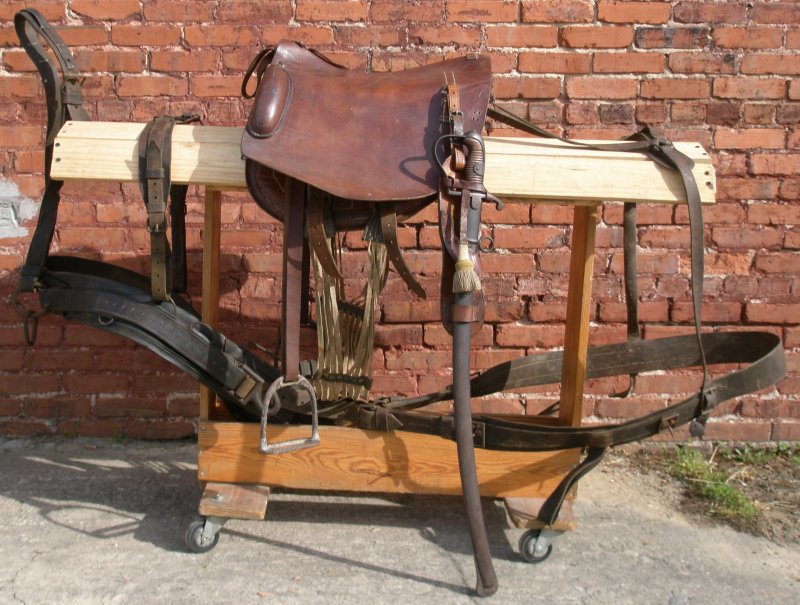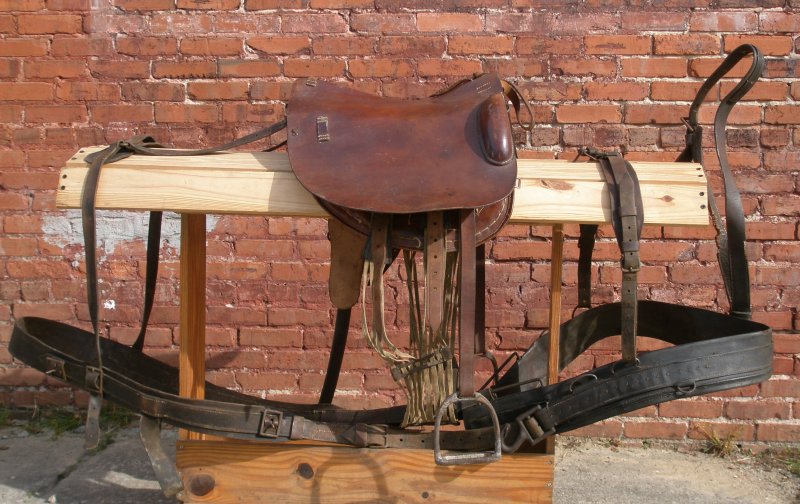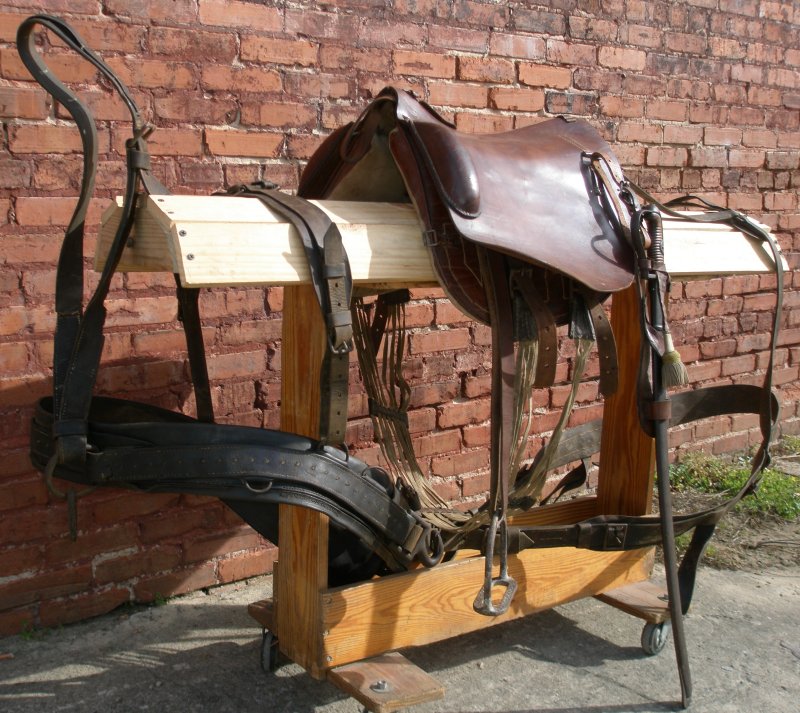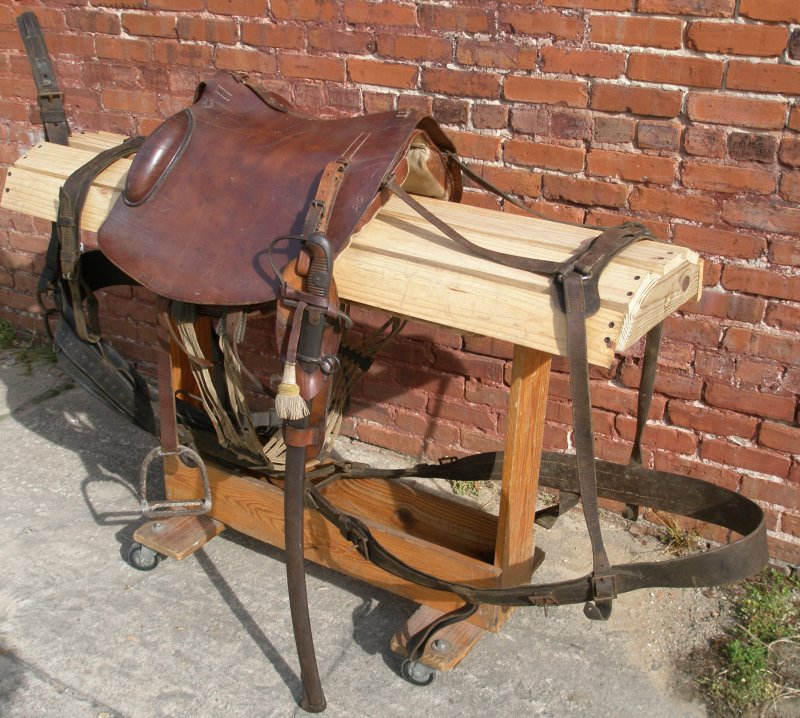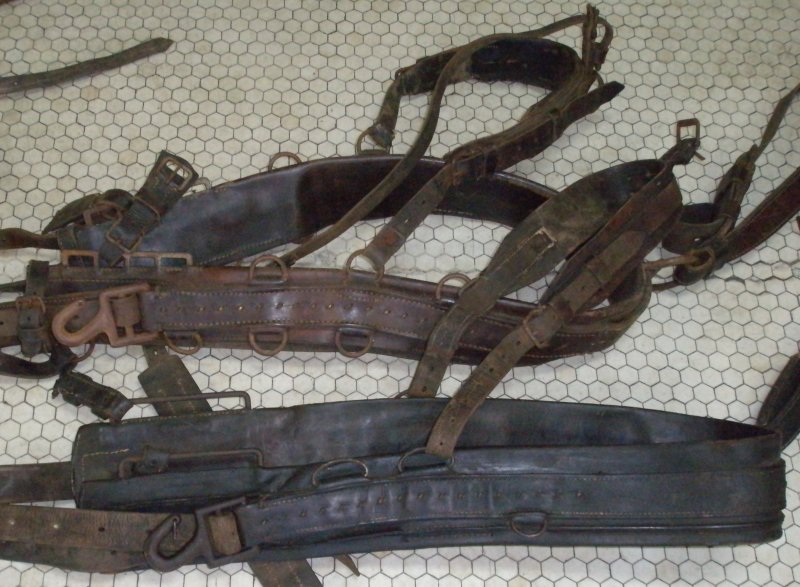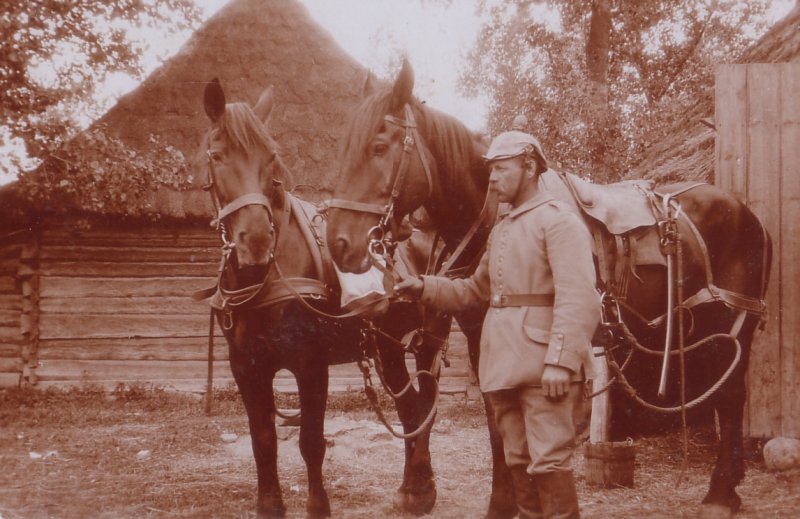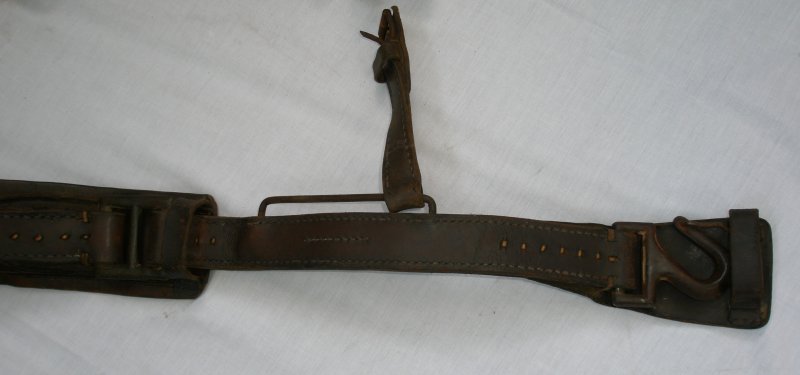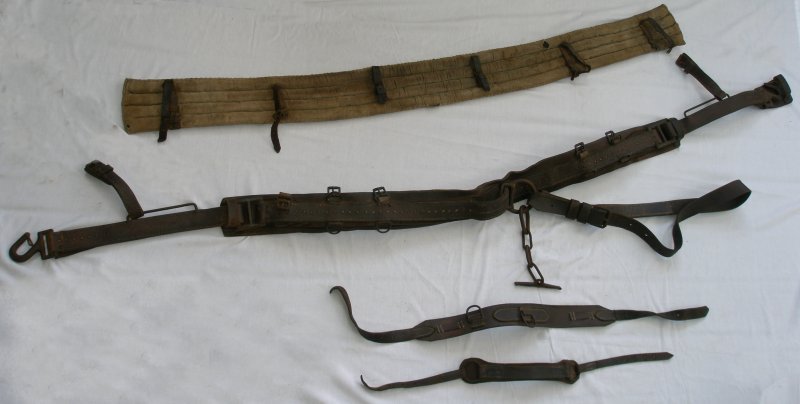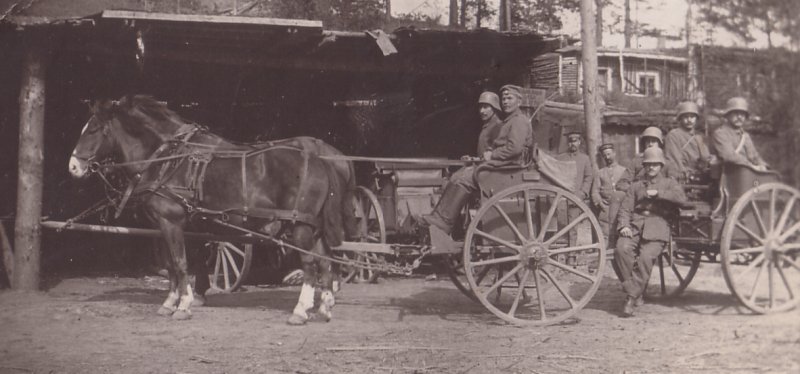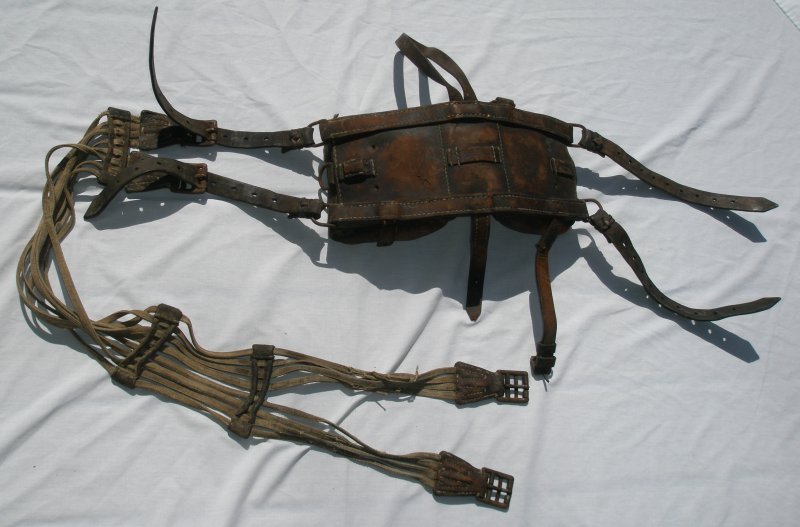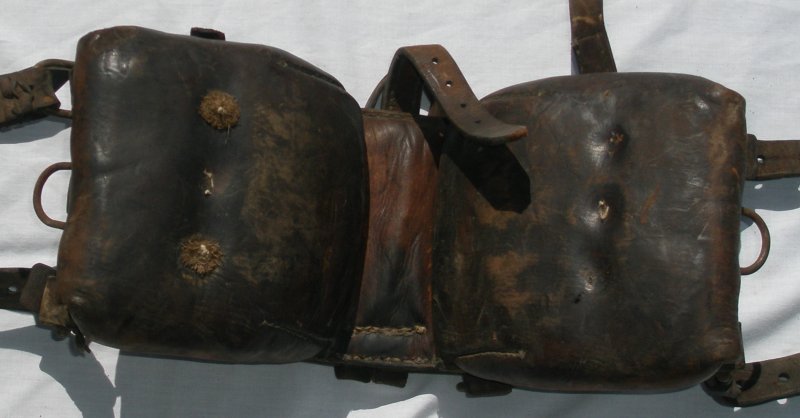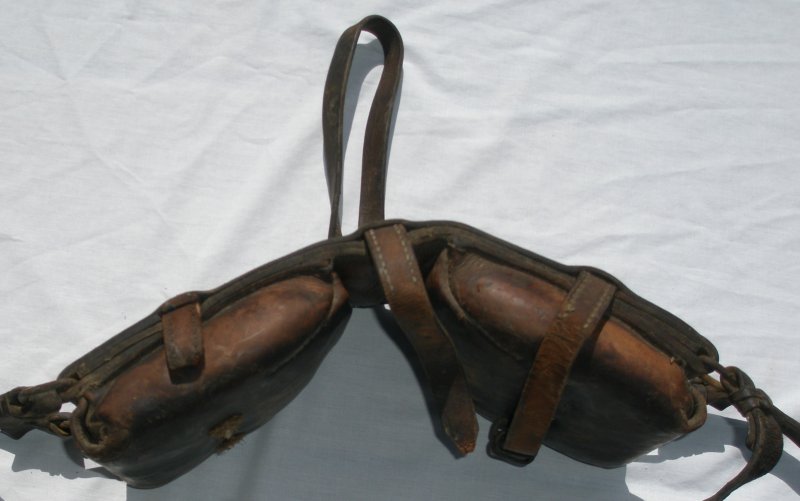Foot Artillery Driver's Saddle and Harness
Artillerie Militärsattel & Pherdegeschirr
Below. This is the German WW1 Era Foot Artillery service Driver’s Saddle and Harness.
This example is set up for a rider. In this configuration, it has stirrups and a Prussian
type Enlisted Man’s Artillery Saber. A complete Breeching, as pictured, is used
on the rear or Wheel Team.
The German WW1 Foot Artillery Harness looks very
much like the German WW2 Era Harness. The WW1 type (lower in the below photo)can
be distinguished by its lighter weight construction, thinner wire like D-rings
and two wire rectangular shaped attachments mounted into the leather, facing
up-ward at each end of the harness. The WW2 harness (upper in the below photo)is
noticeably heavier construction with larger diameter D-rings and this rectangular
attachment is made from a single punched-out piece of steel. The WW2 ones
also typically have the Wehrmacht Waffenamt
and manufacturer three letter codes .
Below: This is the German WW1 Era Foot Artillery Harness with a Breeching. The Breeching is only found on the two rear or Wheel Team Horse harnesses.
Below. A photograph from the Foot Artillery manual of a Wheel Team Horse with a rider’s saddle plus the Prussian Enlistedman's Saber. Because it is a wheel horse there is a breaching hooked to the collar.
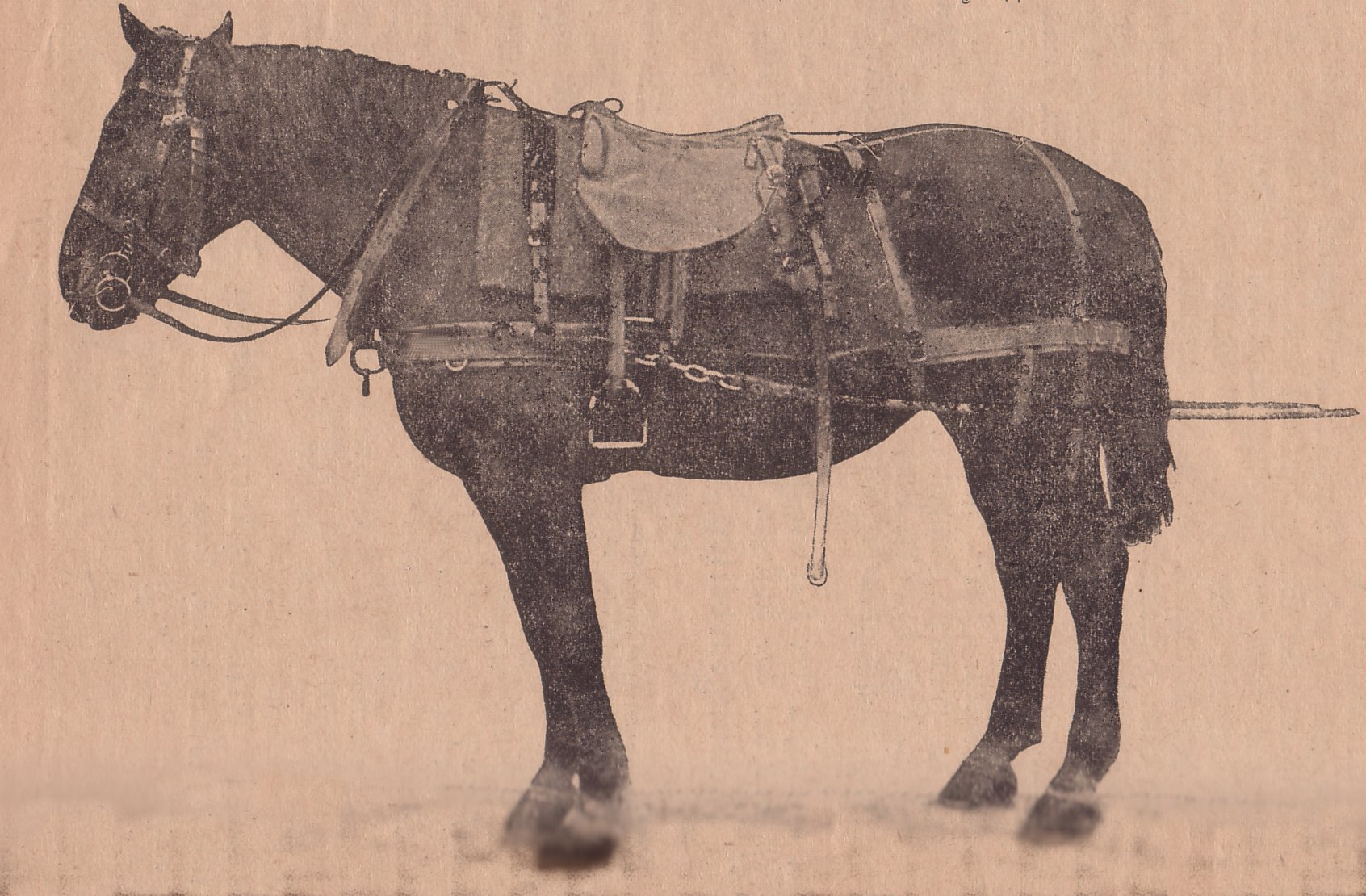
Below. The German WW1 Era Foot Artillery Valise
Saddle with saddle bags. The valise saddle is typically not ridden.
Often stirrups are not even mounted onto the saddle.
Also because the valise is not ridden a saber is not rigged for this saddle.
Note, the breeching appears to be the WW2 pattern
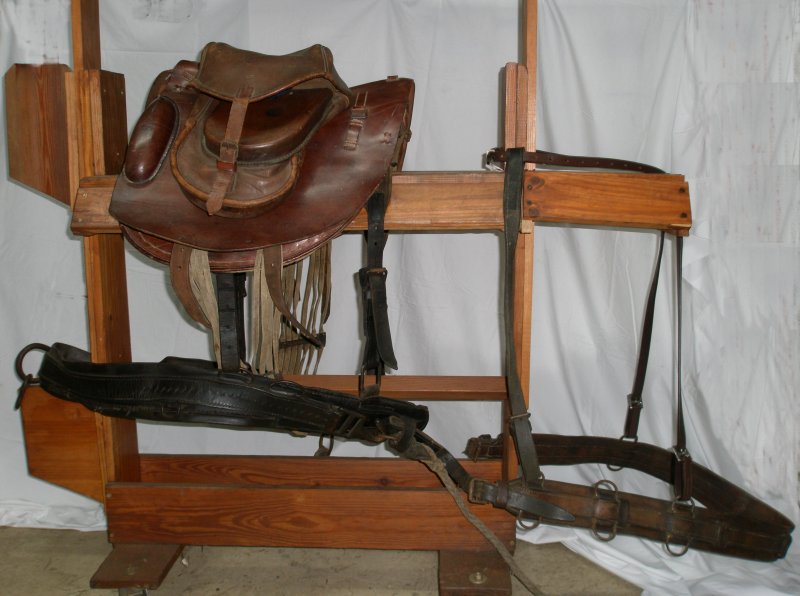
Below. A photograph from the Foot Artillery manual of a Lead or Swing Team Horse with a valise saddle fitted with a back strap.
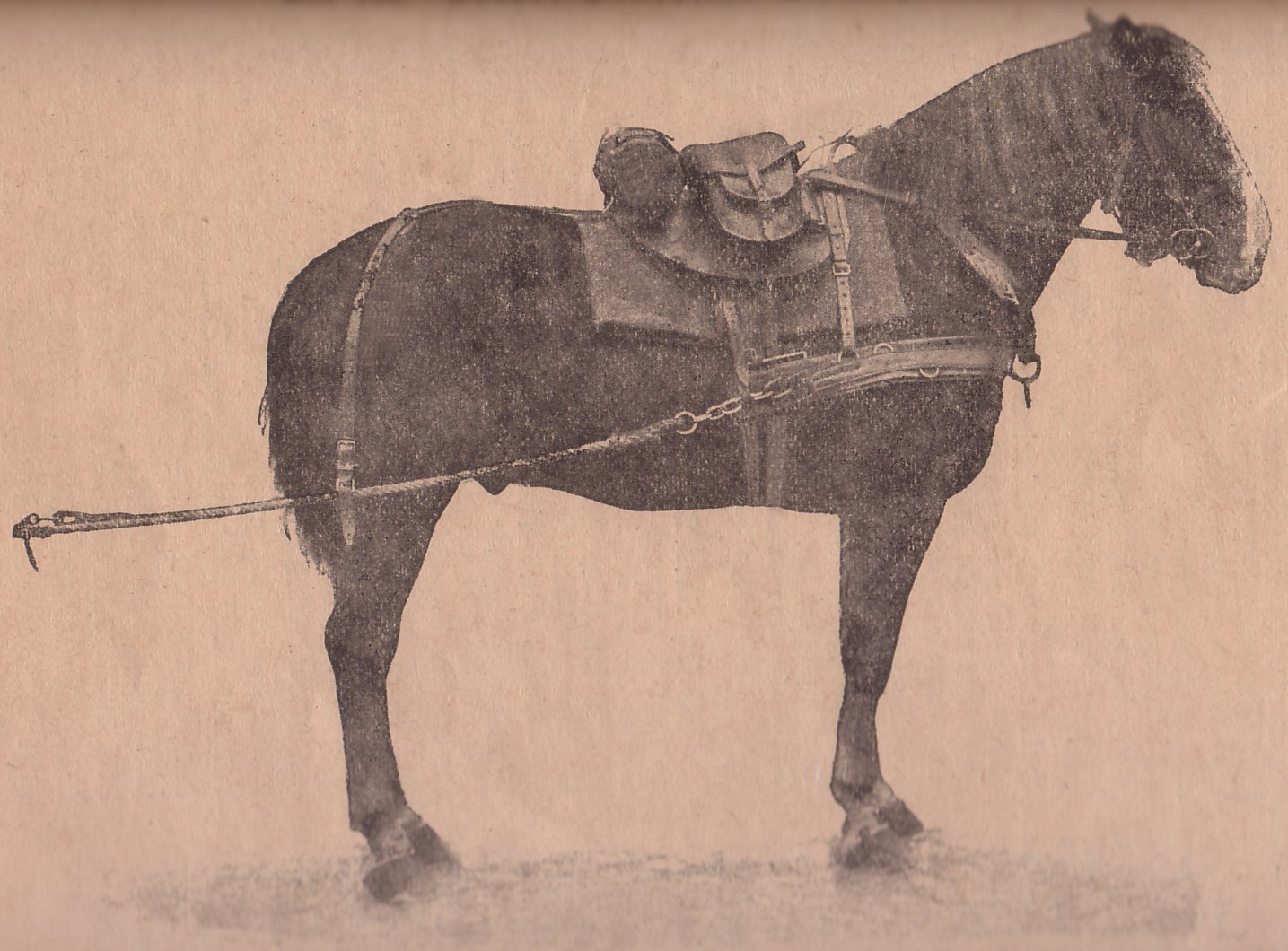
Below: Orginal photograph of a German Foot Artilleryman with wheel team horses
Below: Sielengeschirr 16 is a variation of the Foot
Artillery Harness with an extension for the trace line hook. This harness
is dated 1917 and manufactured in Nuremberg.
Below: The Sielengeschirr 16 with Nuremberg maker marks
and extended Foot Artillery Harness with padding and other straps.
Below: This is an interesting variation of the German Foot Artillery Harness, this time used with a German Infantry Machine Gun Limber and Wagon. Only two horses are used and a leather pad is in place of the saddle.
Below: As in the orginal photograph above, this is a German Army Horse Harness Back Pad. These were used in place of the saddle to bring the collar and breeching together.
Below: Left, underside of the Harness Back Pad. Right, the side view.
Back to Main
All images, research, and text are sole property of Ralph Lovett.
